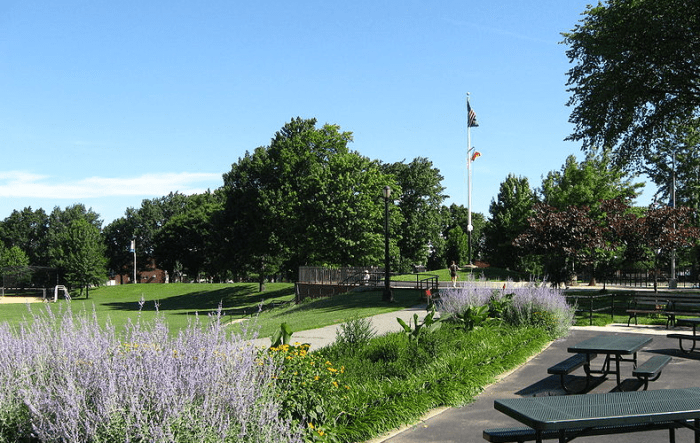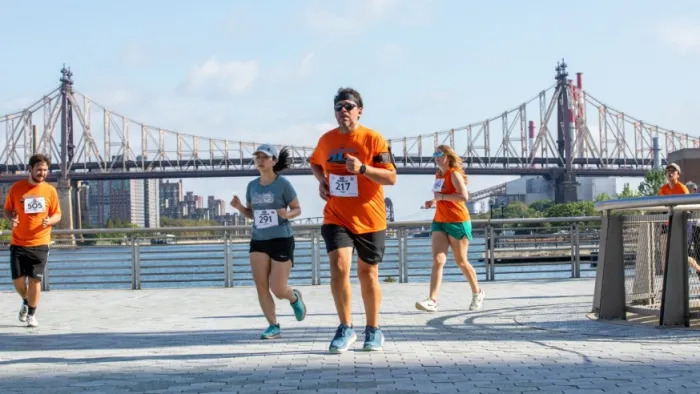By Alan Krawitz
The Leap Dance Project, created two years ago by the Queens Council on the Arts in partnership with the LaGuardia Performing Arts Center, was founded to foster a better sense of community among dancers and dance professionals working in the borough.
The project is a nine-month program that offers professional development workshops, peer leadership to encourage the exchange of resources, ideas and information as well as admission to local performances and low-cost rehearsal space.
“QCA was meeting many dancers around the borough and not many of them had a clue as to who was who, so we decided to try the LEAP program,” said Lynn Lobell, Queens Council on the Arts’ managing director.
Lobell noted that while other arts organizations such as Topaz Arts and Green Space were doing a “fantastic job of offering dancers an affordable venue.” which is rare in New York City, QCA wanted to create cohesion among the dancers in hopes of building leadership in the field.
Further, she added that 2012’s Leap Dance participants are the tops in Queens’ dance right now. “From established artists to emerging choreographers, Leap features a diverse range of individuals working on a variety of topics, all rooted in their experience as Queens residents,” Lobell said.
Leap artist Leslie Scott is the founder and artistic director of Long Island City-based Bodyart, a multimedia, modern dance theater company. Scott, who has performed at several New York City landmarks, including the Ailey Citigroup Theater and The Joyce Soho, said her company is currently preparing for their upcoming city season at the Baruch Performing Arts Center in Manhattan Oct. 4 to Oct. 7.
“This evening will feature the New York City premiere of ‘Loft’ set to a commissioned sound score… a world premiere of ‘I wanted…’ and an encore performance of ‘Script’ originally commissioned by the Dallas Dance Council,” Scott said.
Steven Hitt, managing director of LaGuardia Performing Arts Center, said that dance in Queens is growing and thriving. “I believe LaGuardia Performing Arts Center has a lot to do with that growth at the moment. Over the past several years we have hosted some of the best mid-career and emerging dance artists in the Northeast and particularly New York City artists.”
Hitt said artists such as RIOULT and Azure Barton are well-known and respected names, but more important to him are the names people have not heard of, at least not yet.
While Scott agrees that dance in the borough is growing stronger, she said competition for funding is as tough as it has ever been.
“With ‘bigger fish’ swimming in smaller ponds, more than ever as a dance maker you are forced to be extremely pointed and specific with your projects,” Scott said.
Hitt agreed, adding “I believe the most difficult and challenging problem facing choreographers is paying for the space to develop new work.”
A unique space rent program offered by LaGuardia Performing Arts Center, he said, allows artists to develop and perform new work by providing technical hours and time to make certain that elements such as lighting are correct.
To Emily Berry, choreographer and artistic director of Beyond Third Wave performance collective in Jackson Heights (b3w.org), her company has taken much of its inspiration from the borough of Queens itself.
“Our company…includes Haitians, African Americans, whites, a Korean immigrant, and a Venezuelan immigrant. This level of diversity provides a rich dialogue, especially as we dive into the topic of forgiveness,” said Berry as she described an upcoming project called “Forgiveness,” a multi-media performance with dancers, actors, live music, and new media that delves into the topic complete with stories and expressions of forgiveness along with the consequences of not being able to forgive.
Spin Art, another of Berry’s projects is a 25-foot-by-25-foot plexiglass cube with an audience surrounding the cube. Berry explained that four dancers inside the cube have tubes attached to their bodies that spray paint when they fling their limbs.
“As the performers build momentum through spiraling and flinging movement sequences, the glass slowly becomes covered with paint and the performers disappear from view,” she said. “Once the performance is complete, audience members can enter the cube as they would a gallery where the walls, ceiling and floor have become the canvases.”
Berry said that she, too, has observed renewed interest in community dance. “While the arts are usually seen as being on the outskirts of society and dance on the outskirts of the arts, we are seeing a resurgence of the power of dance,” she said.
She also praised organizations such as QCA and LPAC for providing necessary funding to make community dance projects possible.
Community projects Berry recommended include Green Space (greenspacestudio.org), Topaz Arts (topazarts.org), Queens Theater in the Park (queenstheatre.org), LaGuardia Performing Arts Center (laguardiaperformingarts.org), The Jamaica Performing Arts Center (jamaica-performingartscenter.org), and Flushing Town Hall (flushingtownhall.org).
Sarah Council, a Queens’ resident for the past seven years who grew up in a coal-mining region of Kentucky, founded Sarah Council Dance Projects in 2007 as a platform to create “emotionally and physically honest” dance performance works.
Her latest work, “Staring at Stones,” examines Council’s Southern roots via the exploration of the culture of the Appalachian Mountains, home to picturesque rolling hills and varied hardships.
Calling dance in Queens “as vibrant and varied as the community it reflects,” she said there is a wide variety of performance opportunities for local companies to share their work with the Queens community.
“They range from festivals and showcases to programs such as Green Space’s “Take Root,” a series that presents choreographers in a full evening of work,” Council said.
For those who cannot get enough dance in the borough, she advised residents to “get to know your local dance artists … many teach classes and offer various workshops open to the Queens community.”
Failing that, Council said that becoming a financial donor is yet another way to support local artists.
“Every contribution, no matter how small helps. Finding the resources to create and produce new dance is one of the biggest obstacles to the growth of our community,” she said.
































